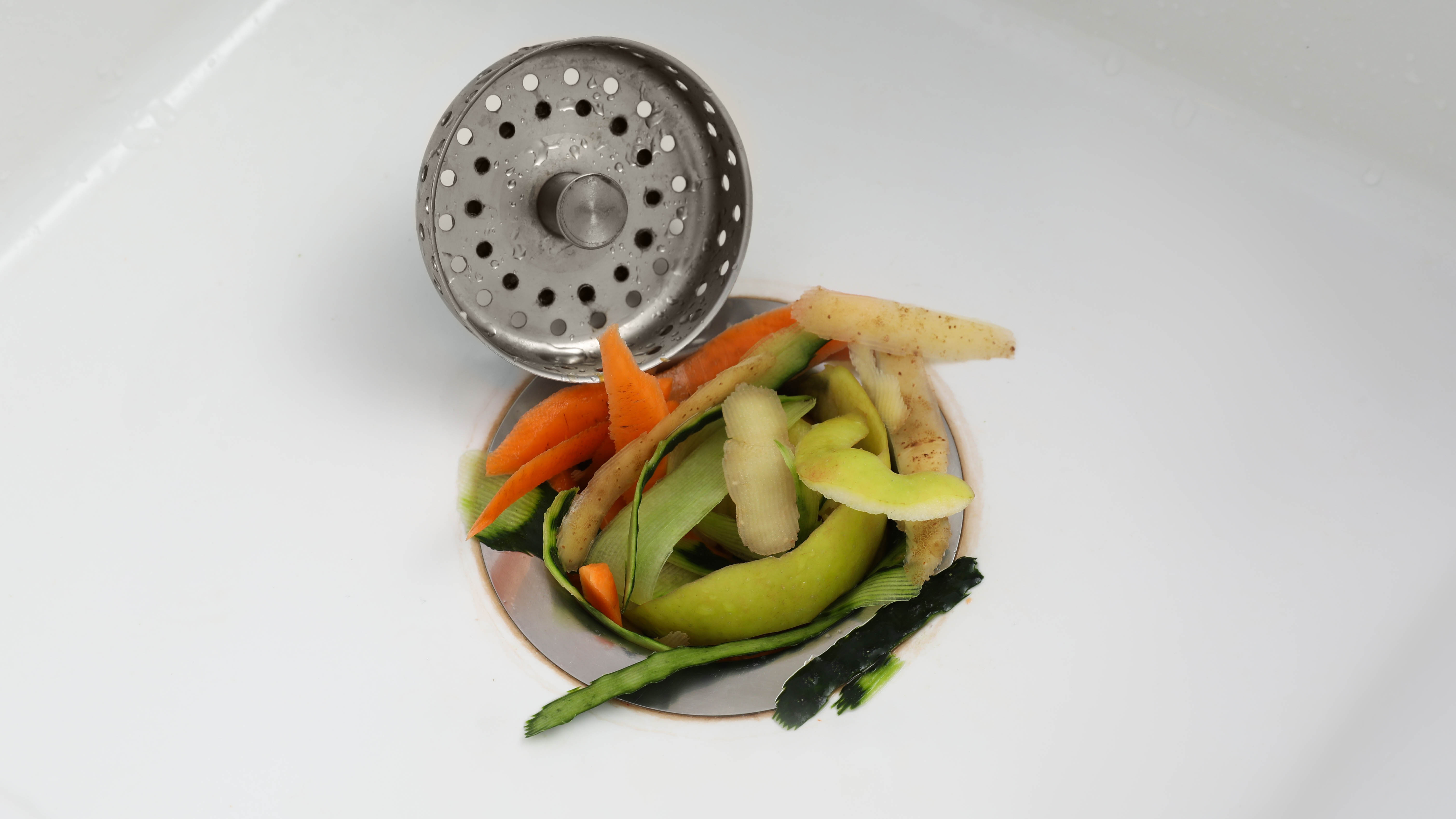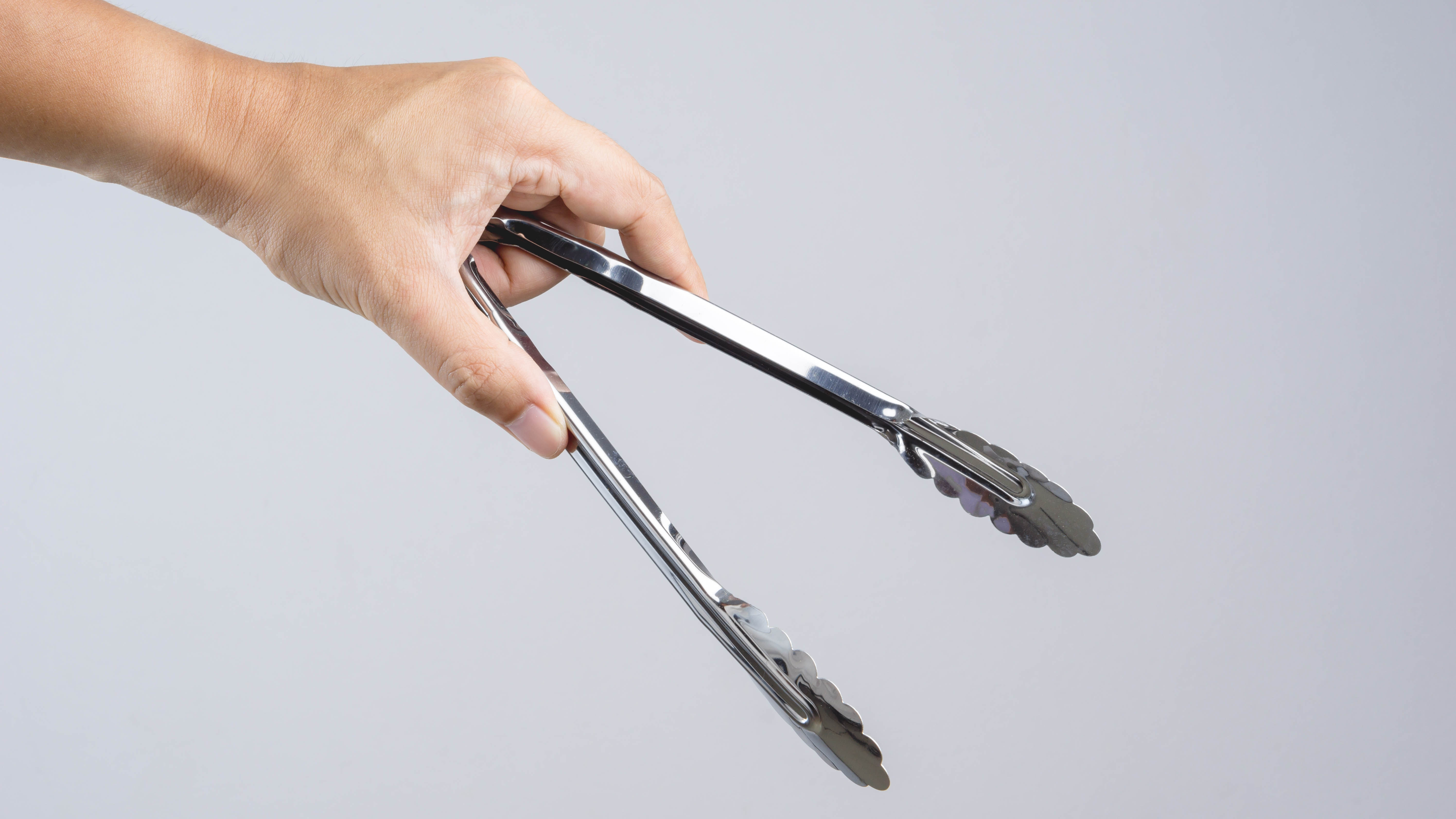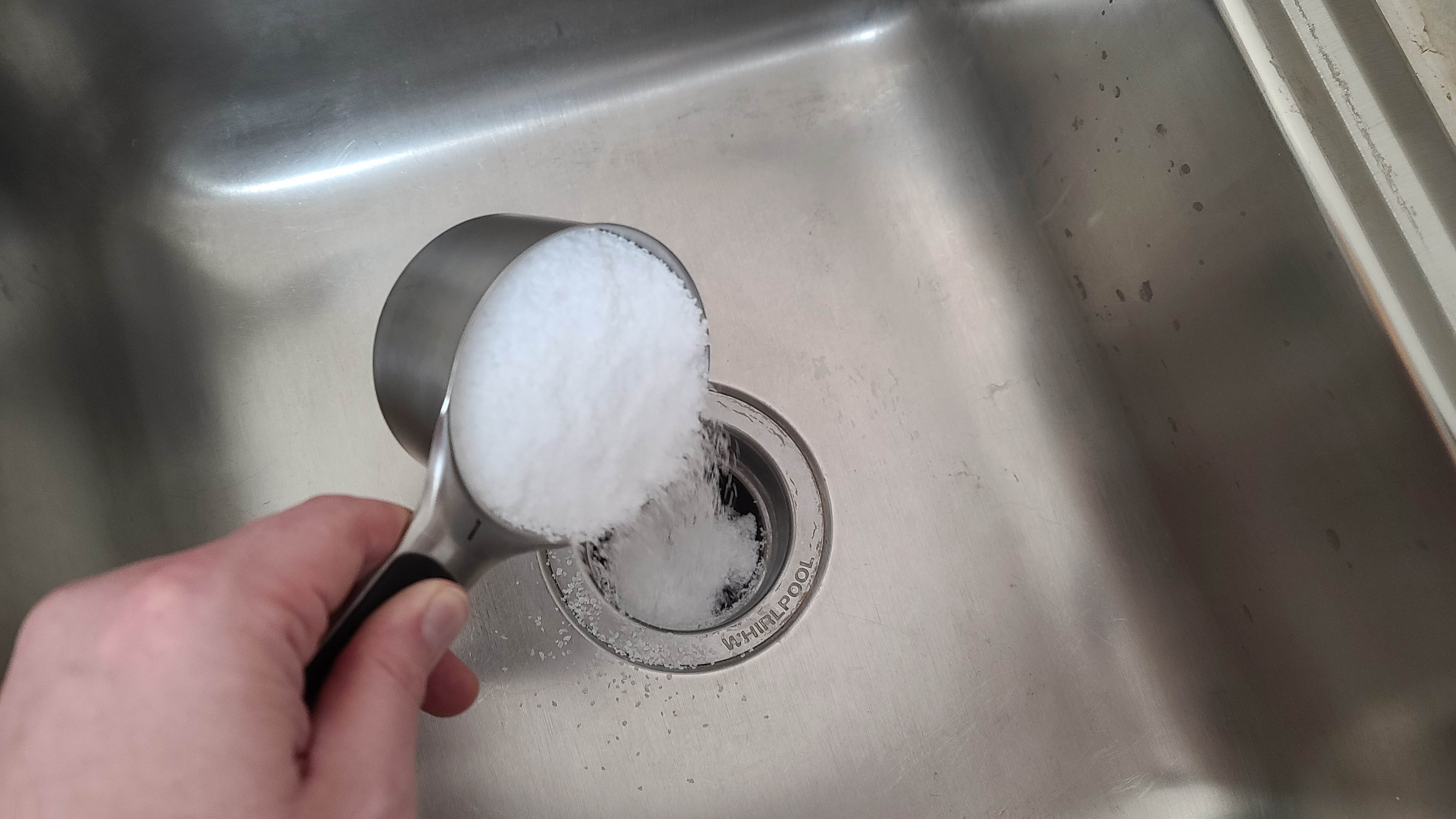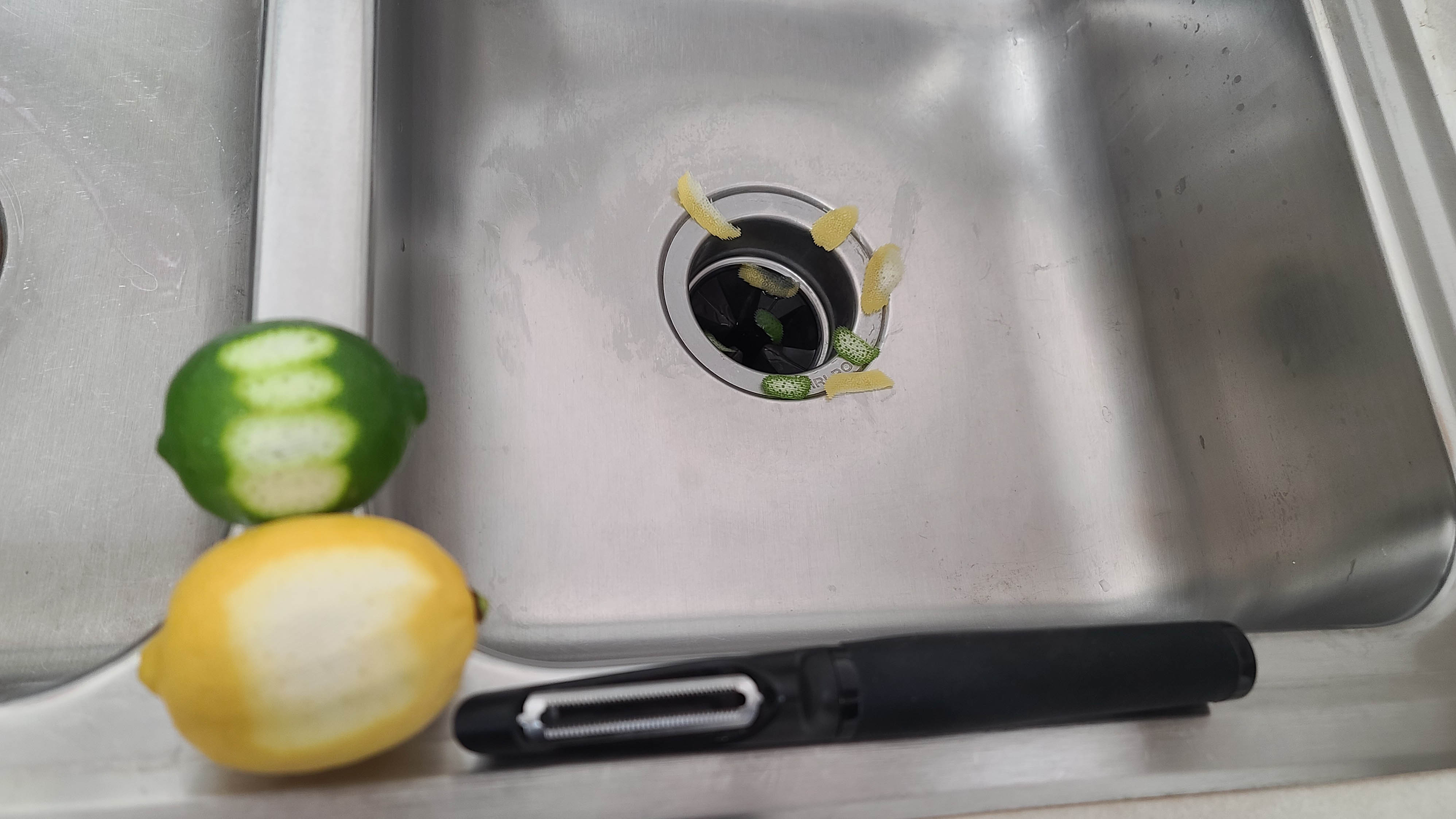How to clean a garbage disposal and get rid of that smell
Here’s how to clean a garbage disposal quickly and effectively

Knowing how to clean a garbage disposal can keep your drain smelling fresher for longer. These hidden tools are amazing when you think about it, grinding up any leftovers and flushing the remains away almost instantly. This saves you from the smell of old food residing in your trash. However, with continued use, food can unfortunately get caught up in your garbage disposal, eventually rotting and leading to unwanted smells which won't flush away — even learning how to unclog a drain can prove useless.
The good news is that there are ways you can manage this, and all it requires are a few household items. Here, we will take you through how to clean a garbage disposal step-by-step, answering any questions you might have along the way. We will cover what to do if there’s a blockage and tips to get it smelling fragrant by the time you’ve finished. So your garbage disposal will be running as good as new in no time.
Be sure to also check out 11 things you should never put in the garbage disposal, and how to deodorize your trash can in 5 easy ways.
How to clean a garbage disposal
Dish soap
Sponge
Flashlight
Tongs (optional)
Protective gloves
Microfiber cloth
Long-handled scrubber brush
Ice cubes and kosher salt or
Baking soda and white distilled vinegar
Citrus peels (optional)
1. First of all, you’ll want to disconnect the power. Switch off the unit and flip the circuit breaker to your kitchen — this is to stop the garbage disposal from accidentally switching on while you’re cleaning it. Be sure to check it's switched off before starting to clean it.
2. Next, remove the baffle and wash it thoroughly using warm, soapy water and a sponge. If it’s dishwasher safe you can also run it through a cycle. Leave the baffle removed for now.
3. Shine a flashlight down into the unit to see what you’re dealing with and to check for blockages. If you spot a blockage, you’re going to have to remove it manually using a pair of tongs, such as the Winco Stainless Steel Utility Tong ($3, Amazon). Just be sure to keep your distance from the impellers as you do this and wear protective gloves if possible. Do not reach in to pull out the blockage yourself, as this could be dangerous.

4. Next, you can clean the ceiling of the unit by wiping a damp microfiber cloth around it from the underside of the drain. This will be a bit awkward, but it takes care of any food which may have splashed back while being ground down.
Sign up to get the BEST of Tom's Guide direct to your inbox.
Get instant access to breaking news, the hottest reviews, great deals and helpful tips.
5. Now, if you noticed that the impellers were covered in food earlier when you used your flashlight, you can clean these yourself, but you must do so very carefully. While wearing protective gloves and using a long-handled scrubber brush, such as the OXO Good Grips Deep Clean Brush Set ($8.99, Amazon), you can scrub the impellers clean with warm, soapy water. Try to hold the flashlight over the drain as you do this, so you can see what you’re doing clearly, and make sure you keep your distance from the impellers once again.
6. Reconnect the power, replace the baffle, and flush your garbage disposal unit through with some hot water while running to wash away any residue. Do this for about 20 seconds.
7. You now have a couple of options for the next step.

- Fill the unit with ice cubes until they reach the brim and tip one cup of Kosher salt on top. Then run cold water through the system with the power on until the ice is processed. This will help scrub the impellers clean.
- Alternatively, you can pour down ½ cup of baking soda, then leave it to sit for 30 minutes or so. This will help deodorize the drain. Once time is up, pour ½ cup of white distilled vinegar on top. The two should react and start to fizz, removing any blockages they come into contact with. Wait for a few minutes for the fizzing to stop and then rinse away while the disposer is running.
8. If your garbage disposal still smells at this point, cut up some citrus peels, such as lemon and lime and feed them through gradually with running water while the unit is switched on. This won’t do anything in terms of cleaning, but it will refresh the fragrance.

Your garbage disposal should be looking, and smelling, like new again by this point. If things still don’t smell right, you can repeat from step 7 as necessary, but if there’s still no luck, you might have to call in a professional as the blockage may be deeper.
How to keep your garbage disposal clean
- Make sure you leave water running for as long as necessary to fully flush through any foods. The water should still be running for about seven seconds once the grinding has finished.
- Always feed food through a garbage disposal gradually and don’t grind too much food in a single session. 1-2 cups is enough.
- Don’t leave your unit running for longer than necessary. Follow the manual’s guidance for maximum run time — this is usually about 30 seconds to one minute.
- Don’t put the wrong foods down your garbage disposal. This includes celery stalks, coffee grounds, egg shells, grease and oil.
When should I clean my garbage disposal?
Most people forget to clean their garbage disposal and only realize it needs cleaning when it starts to smell. A smelly drain is indeed a clear indicator that you need to deep clean your garbage disposal. However, you should also keep an eye on the baffle as this will need cleaning more regularly. Remove and check it for food debris every week and clean as necessary.

Katie Mortram used to be a Homes Editor for Tom's Guide, where she oversaw everything from kitchen appliances to gardening tools, as well as smart home tech. Specializing in providing expert advice for cleaning and home manintenance, she now works as Household Advice Editor for Good Housekeeping.
